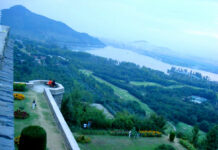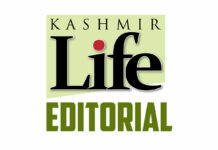For the last fortnight, the news that has dominated the front-pages was about a Delhi media house, routinely carrying over a developmental comparison survey across Indian states, offering state of the state’s award to J&K’s health department.
The survey, normally based on the figures that are already in public domain, offers some idea of changes that public investment triggers in different states and societies across India. But this is quite strange that a state that occupied fourteenth position in the Indian state’s overall ranking jumped to the first position in a span of 12 months. While people in J&K are fully aware, mostly in Jammu, of the state of health in the state, the quantum jump in J&K case might encourage the researchers to relook at their parameters.
Despite private practice of medical professionals, fake medicine in the market and massive mismanagement of the state health sector at different levels, Kashmir’s health sector is still better. Part of its efficiency owes more to the dedication of the medical fraternity during emergencies. For the last nearly thirty years, Kashmir has been passing through a particular situation in which the medical professionals had to manage sort of crisis within the shortest periods of time which gave them have a huge advantage over their counterparts in rest of the state.
The added advantage they had in managing crisis during the 2005 earthquake and even in September 2014 when even the main hospital in the city was inundated at a huge cost.
At the same time, the doctors have been managing a massive overload of people with diverse psychological and psychiatric problem, mostly dictated by the same situation.
This sort of experience has created a ridiculous situation that in grave situations, if the patients reach hospital, they survive and in routine situation, people even die of manageable infections. Medical fraternity has been taking emergency situation very seriously but becomes complacent in routine. Despite all this, health sector is doing much better than in Jammu.
Apart from the fact that state’s health care sector is seriously facing problems on account of lack of human resource at different levels, the managerial issues in keep the infrastructure well-oiled and ready, and managing a balance between secondary and tertiary care facilities is still not a priority.
The secondary healthcare set up collapsed with the start of militancy and for the last thirty years, managers in the sector are unable to help it revive. For every single delivery women are still being driven to Srinagar’s main maternity hospital which should have ideally been managed at the district levels. The Primary Health set-up would require a lot of efforts to become fully operational.
The second severe crisis is the planners’ problem in identifying the right place for the right activity. For years now, they have segregated maternity from neo-natal care.
They demolished the erstwhile Children’s’ Hospital and took it to the cantonment, apparently on a Sadhbavana exercise. Now it feels chocked for space. Attendants are now killing their time on the already congested road. Now they are creating a new facility in Bemina, least caring about what will happen if the flood basin fills up!
Even the state run Medical College is not healthy. Vacancies in the faculty have pushed it close to the de-reorganization by the Medical Council of India. It should have been a top priority for the planners for all these years.
J&K does impressively on various factors and all wards and rewards need to be celebrated. But before cake-cutting, we must also ponder over: do we really deserve it?









